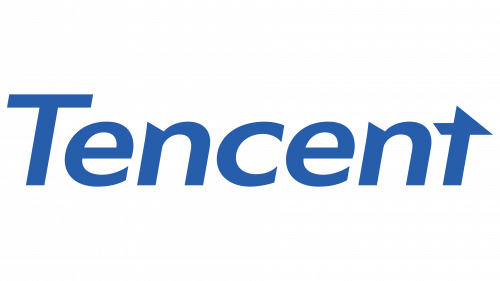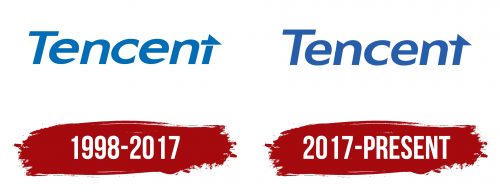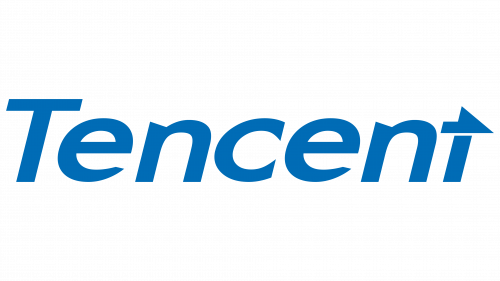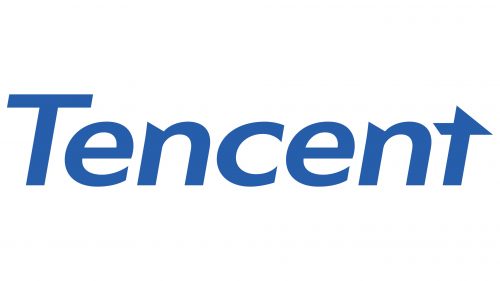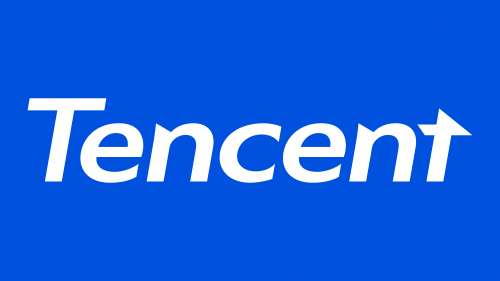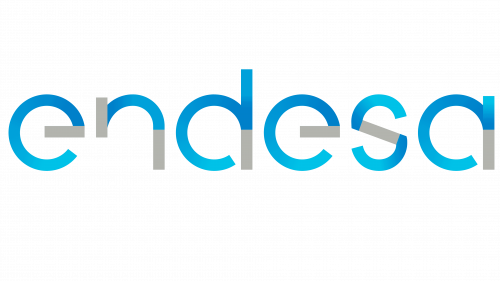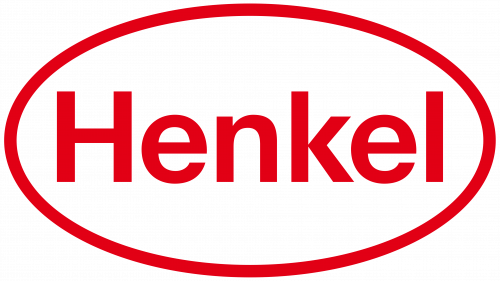The Tencent logo is characterized by a simple and businesslike style, perfectly fitting within the visual identity of an investment company. The emblem is informative, practical, and clear, representing the corporation at all levels.
Tencent: Brand overview
Tencent’s origins started in Shenzhen, China, in 1998. Five businesspeople created the corporation: Ma Huateng, Zhang Zhidong, Xu Chenye, Chen Yidan, and Zeng Liqing. The business was founded as “Tencent Computer System Co., Ltd.” its primary product was pager software.
In its first year in business, the company created and released OICQ, an instant messaging app. OICQ’s rapid prominence among Chinese internet users laid the groundwork for future prosperity.
The firm encountered its first big obstacle in 1999. Because OICQ and ICQ are identical, the American corporation AOL, ICQ’s owner, filed a copyright infringement lawsuit. As a result, the company was compelled to rename its product to QQ in 2000.
A sea change occurred in the year 2000. IDG Capital and PCCW made the company’s first sizable investments, enabling growth in its workforce and expediting the creation of new goods. The portal QQ.com debuted in the same year and quickly rose to the top of China’s most popular websites.
The firm started charging for its enormous QQ user base in 2001 by launching virtual items and premium services. This choice proved quite successful and established the basis for the organization’s business strategy for many years.
With the introduction of QQ Game Portal in 2003, the company made its foray into the online gaming industry. This action greatly increased revenue streams and improved its standing in the Chinese internet market.
A milestone occurred in 2004 when it launched an initial public offering (IPO) on the Hong Kong Stock Exchange. In addition to bringing in more money, this IPO enhanced the company’s reputation abroad.
In 2005, virtual money, known as Q-coin, was introduced. Its rapid rise in popularity and use for actual transactions outside the company’s ecosystem raised concern among Chinese officials.
Qzone, a social network introduced in 2006, grew rapidly to become one of the biggest in China. The same year, an online marketplace named Paipai was unveiled, meant to rival Taobao from Alibaba Group.
The first overseas investment was made in 2008 in Digital Sky Technologies (later known as Mail.ru Group).
The release of the mobile messaging app WeChat (Weixin in China) in 2011 was a turning point. WeChat swiftly rose to prominence as one of the most used apps in China.
The company continued growing its network of goods and services in the ensuing years. WeChat Pay, introduced in 2013, became one of the main ways people pay for mobile devices in China.
An important transaction occurred in 2014 when $215 million was paid to acquire a 15% share in JD.com, one of the biggest online retailers in China.
One of the biggest transactions in the gaming business’s history was the $8.6 billion acquisition of a majority stake in Supercell, a Finnish mobile game developer, in 2016.
In 2017, the firm became the first Chinese internet company to reach a market valuation of $500 billion.
Reorganization in 2018 led to the formation of the Cloud and Smart Industries Group (CSIG), a move in response to the increasing focus on cloud computing.
In 2019, global reach was extended with the introduction of several artificial intelligence projects.
In 2020, to bolster its standing in the gaming sector, $3.4 billion was spent to buy a 10% share in Universal Music Group, enhancing its skills in content licensing and music streaming.
The impact of cloud technology grew substantially in 2021 with the unveiling of new goods and services on the Tencent Cloud platform, such as big data analytics and artificial intelligence development tools.
In 2022, the focus shifted to creating augmented and virtual reality technology, including developing a virtual reality platform for building virtual game environments and social networks.
Notable global expansion occurred in 2023 with major investments in American and European software startups, focusing on the financial, healthcare, and artificial intelligence sectors.
A new green technology program was started in 2024. It plans to switch to renewable energy for all data centers by 2030 and create services and apps for sustainable development and environmental projects.
Meaning and History
What is Tencent?
It is a Chinese multinational conglomerate holding company specializing in various services and products related to the Internet, entertainment, artificial intelligence, and technology. It is one of the world’s largest technology companies, and its portfolio includes social media, online gaming, e-commerce, and cloud computing. It is known for popular social media platforms such as WeChat (Weixin) and QQ and for dominating the online gaming industry with games such as Honor of Kings and PUBG Mobile. The company invests in startups and well-known companies worldwide, covering various sectors, including fintech, media, and autonomous driving.
1998 – 2017
From its earliest months, Tencent began using a wordmark logo, which has remained with the company for a long time. This format of visual identity effectively fulfills two fundamental marketing functions:
- Introduces customers to the corporation
- Promotes its services
Even in its minimalist form, the logo successfully achieves its objectives, generating interest in the brand. The emblem serves as a visual affirmation of high professionalism, business acumen, and a responsible approach to work. Looking at it, potential clients immediately understand that this is an accessible and balanced company, not devoid of creativity, as it has chosen a modified rather than a classic font to present itself effectively and express its creativity.
This approach to branding helps Tencent stand out among competitors, maintain its unique identity, showcase its skills, and emphasize its modernity. Perhaps this is why the Chinese corporation is in no hurry to change its logo drastically. The name is used as the foundation of the emblem, slightly enhanced with graphic elements. The lettering is executed in a rounded lowercase font, except the first “T,” which is uppercase and strictly geometric.
The other letters feature smooth curves and soft lines, which nicely balance the sharp cuts and pointed ends. Thanks to this combination, the Tencent emblem appears both positive and businesslike. A sense of purpose is added by the arrow-like element positioned above the lowercase “t.” This element serves several functions:
- Adds dynamism and the energy of movement
- Indicates that the company is moving forward
- Replaces the crossbar of the letter “t.”
- Makes the logo distinctive and recognizable
Additionally, the partial arrow resembles a classic paper airplane, infusing the emblem with a friendly atmosphere. The calm, light blue color further enhances this welcoming nature. This shade visually softens the sharpness and harshness of the glyphs, supporting the airplane image and reinforcing the idea of ease in working with the company.
2017 – today
The Tencent emblem is a wordmark rendered in an italic grotesque font. The rounded block letters are closely aligned in a row, clearly indicating the name of the Chinese investment corporation. The text is highly legible thanks to the optimal spacing between the characters and the smooth refinement of the glyphs. It maintains a harmonious balance between angles and curves. Notably, the letters now have a smaller tilt angle than before, giving them a straighter appearance.
Although the logo is a wordmark, it includes an important graphic element that conveys the brand’s concept. This element enhances the logo’s recognizability, even though the signature feature is now connected to the letter “t.” It embodies the drive for progress, the desire to evolve, and the commitment to progress toward a set goal. The small details resemble:
- The vertical crossbar of the “t.”
- Half of a directional arrow
- A flying paper airplane
This imagery softens the corporate emblem, creating a trustworthy atmosphere. As a result, it effectively attracts customers, which is a key factor in how a small firm transforms into a major investment corporation. The logo’s distinctiveness is further reinforced by the diagonal cut at the ends of both “n” s, as well as the sharp points on the lowercase “c” and “e.”
The font used in the Tencent logo is exclusive, developed specifically for this project, and based on the Fabre Sans Pro 75 Halbfett and Soyombo Bold typefaces. Designers modified certain contours and lines and stylized the final glyph. All the letters in the wordmark are bold, sans-serif, and dark blue. Typically, the logo is placed on a white background, which signifies the company’s openness and draws attention to its name.
